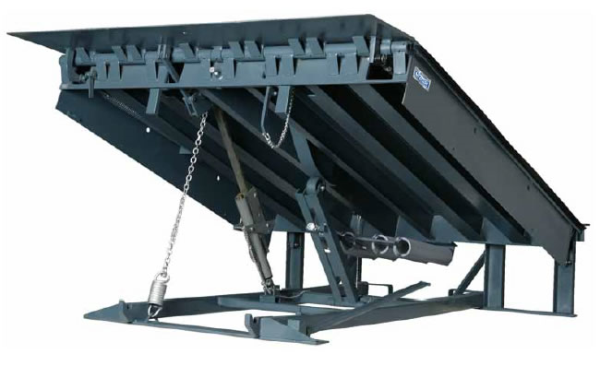Reliable Dock Repair Service Techniques: Ensuring Structural Stability
Making certain the architectural honesty of docks through effective repair techniques is extremely important for the long life and security of marine facilities. This includes a multi-faceted strategy starting with detailed evaluations utilizing advanced innovations like finder tools and from another location ran vehicles (ROVs) to discover both noticeable and hid damages. Subsequently, picking the appropriate repair service products, such as corrosion-resistant alloys and composite materials, is essential for durability. Structural support methods, consisting of the implementation of cross-bracing systems and load-distribution plates, play a crucial role in mitigating anxiety factors. However, the value of these methods ends up being apparent when discovering sophisticated fixing approaches and preventative upkeep approaches.
Examining Dock Damage
Examining dock damages is a critical initial step in guaranteeing the architectural honesty and safety and security of any type of docking center. This initial examination includes a thorough evaluation to recognize both hidden and noticeable damages. Trick elements to check out consist of the dock's structure, pilings, outdoor decking, and equipment. Each element has to be looked at for signs of wear, rot, deterioration, or other forms of destruction that can endanger the architectural stability.
Architectural designers or qualified inspectors typically do these assessments making use of specialized devices and strategies. For circumstances, undersea inspections could use finder tools or remotely operated automobiles (ROVs) to identify submerged damage. Above water, aesthetic assessments are complemented by utilizing wetness meters and other diagnostic tools to discover underlying problems not right away visible to the naked eye.

Finding Fixing Products
Choosing the ideal repair service materials is an essential step in the dock remediation procedure, one that directly affects the durability and performance of the repaired structure. Material choice have to be driven by aspects such as ecological conditions, load-bearing demands, and compatibility with existing dock parts. For instance, timber is a standard selection for docks due to its all-natural durability and aesthetic appeal. Choosing the best kind of wood, such as pressure-treated lumber or naturally rot-resistant species like cedar or teak wood, is critical to endure marine atmospheres.
Along with timber, composite products are progressively popular due to their longevity and low upkeep needs. Composites, generally made from a blend of plastic and wood fibers, offer exceptional resistance to rot, pests, and UV damages. For metal anchors, selecting corrosion-resistant alloys such as galvanized steel or marine-grade light weight aluminum is vital to avoid corrosion and guarantee architectural honesty in saline water problems.
Epoxy resins and marine-grade sealers are vital for repairing fractures and sealing joints, giving a waterproof obstacle and boosting the dock's overall strength. By carefully choosing top quality products, dock repairs can accomplish lasting outcomes, thus securing against future deterioration and making sure safe, dependable use.
Structural Support Techniques
Efficient structural reinforcement techniques are critical in making certain the stability and durability of dock repairs. One fundamental approach entails using steel or composite reinforcement bars (rebar) within concrete structures. Rebar provides added tensile toughness, protecting against splits and dispersing tons more equally. This method is especially reliable for docks exposed to heavy tons or severe ecological conditions.
An additional necessary technique is the application of fiber-reinforced polymers (FRP) These products supply high strength-to-weight proportions and exceptional resistance to deterioration, making them suitable for enhancing wooden or concrete anchors. FRP can see here now be applied in sheets or strips and bound with epoxy materials to enhance structural stability.
Bracing and anchoring systems also play a critical duty in architectural reinforcement. Cross-bracing, using metal or wood light beams, can combat side forces, decreasing swaying and activity. Anchoring systems, such as helical piers or driven piles, supply a secure foundation by transferring tons to much deeper, much more secure soil layers.
Finally, the integration of load-distribution plates can help disperse weight more evenly throughout the dock's surface, minimizing local anxiety points. These techniques jointly make sure that docks remain safe and robust, capable of holding up against the rigors of their operational environment.
Advanced Fixing Techniques

One more advanced method involves underwater welding, which enables repair work to be performed without the need to dewater the location. This method is especially beneficial for attending to structural problems in submerged dock components, ensuring very little interruption to procedures. Enhanced welding methods, coupled with robotic systems, supply precision and dependability, thus extending the lifespan of the dock.
Additionally, cathodic protection systems are executed to avoid deterioration in metallic dock structures. By utilizing sacrificial anodes or satisfied present systems, these strategies successfully mitigate the electrochemical procedures that result in advice product deterioration.
Last but not least, advanced surveillance innovations, such as structural wellness monitoring (SHM) systems, supply real-time data on the condition of dock structures. These systems make it possible for proactive maintenance and prompt interventions, eventually making sure the long-term architectural integrity of the dock.
Maintenance and Prevention
Upkeep and prevention are essential principles that underpin the durability and safety and security of dock structures. Normal inspections are paramount, permitting early detection of wear and tear, possible weaknesses, and environmental influences. A proactive method, entailing routine checks for deterioration, rot, and architectural changes, mitigates expensive repair work and prolongs the dock's operational life.
Preventative procedures must include applying protective layers to metal elements to defend against rust and using cured wood to stand up to decay. Furthermore, guaranteeing appropriate drain and ventilation can stop water accumulation, which is a common cause of architectural destruction. Including high quality products and sticking to manufacturer guidelines during building and construction and repair service phases additionally play essential roles in boosting longevity.

Educating personnel in dock maintenance ideal practices makes certain constant application of precautionary measures. Leveraging technological breakthroughs, such as drones for assessments and sensing units for real-time tracking, can further improve upkeep initiatives. By focusing on maintenance and avoidance, dock owners can ensure structural stability, functional safety, and cost-efficient management over the dock's life expectancy.
Conclusion
In final thought, keeping the architectural stability of marine facilities demands detailed dock fixing methods. Advanced repair strategies, coupled with regular maintenance techniques, make sure the dock remains operational and risk-free under diverse ecological conditions.
Guaranteeing the architectural integrity of docks via efficient fixing techniques is extremely important for the long life and safety and Source security of aquatic facilities.Choosing the appropriate repair work products is a critical step in the dock repair process, one that directly affects the longevity and efficiency of the repaired structure.Reliable structural reinforcement strategies are crucial in making certain the security and durability of dock repair services. By prioritizing upkeep and avoidance, dock owners can guarantee structural honesty, functional security, and economical administration over the dock's life-span.
In final thought, maintaining the structural integrity of aquatic facilities requires detailed dock repair techniques.